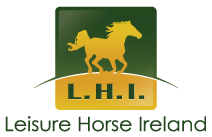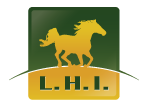The Irish Donkey Studbook
In 2014 Leisure Horse Ireland obtained DAFM & EU approval to establish The Irish Donkey Studbook. This now means donkeys can be registered with pedigree recorded, proven by dna typing.
This important initiative will help promote and develop quality pedigree lines and add value to these animals moving forward.
Donkeys can of course also be registered with us without pedigree recorded and will still qualify for a supplementary Irish Donkey Studbook Passport.
To register your donkey, you will need to complete a Registration Form and have your vet take markings and implant a compliant transponder etc. All Leisure Horse Ireland issued passports are fully approved and suitable for all purposes.
Donkey Origins
A recent study which examined donkey DNA discovered that the modern donkey descends from two types of African wild asses, the Somali wild ass and the Nubian wild ass.
The domestication of donkeys first occurred around 5000 years ago. In approximately 200BC, donkeys were used to transport goods on the 7,000 mile-long trade route from China to the Mediterranean Sea which was known as “The Silk Road”. It is though this route that donkeys first arrived into Europe.
Traditions and Uses
Most donkeys have a darker, narrow, cross-like strip of hair that runs down their backs and shoulders. Christian tradition maintains that originally donkeys had unmarked hides. It is the Christian belief that the dark cross on a donkey’s back only originated after Christ’s entry into Jerusalem. In Christian scripture, Jesus rode into Jerusalem on Palm Sunday on a donkey. After Christ died on Good Friday, it is maintained that all donkeys received the mark of a cross on their back as a reminder of the service that they did to Christ on Palm Sunday.
Early research indicates that donkeys were used by the wealthy as a status symbol. In the past, donkeys were used for agricultural work in the colonies in Northern and Western Europe. In Mediterranean countries, donkeys were also used for agricultural work and for work in the vineyards.
Donkeys were also used for medicinal purposes. For example, donkey’s milk was given to those suffering from tuberculosis and to premature babies. During the Middle Ages, the hairs from the cross on a donkey were worn in a chain around the neck to guard against toothache, fits and whooping cough.
Donkeys in Ireland
Donkeys are thought to have been brought into Britain by the Romans during the Roman invasion of the 1st century A.D. The earliest known documented reference to a donkey in Ireland is in 1642 when a reference was made to a donkey being seized in the capture of Maynooth castle.
It was not until the 19th century that the donkey rose to prominence in Ireland. During the Peninsular War (1808-1814), many donkeys were brought to Ireland by the British who were fighting against the French army. As Irish stallions were in high demand on the continent, the British army traded donkeys in exchange for horses. After this time, the donkey appears much more frequently in Irish records.
In Ireland, donkeys were used by people for transportation purposes. As donkeys have the ability to carry and pull loads up to twice their body weight, donkeys were an invaluable asset to farmers. They were used for ploughing and working crops, collecting turf, transporting potatoes and seaweed, and for transporting other goods. In today’s society, while some donkeys are still used for work purposes, most are pets.

